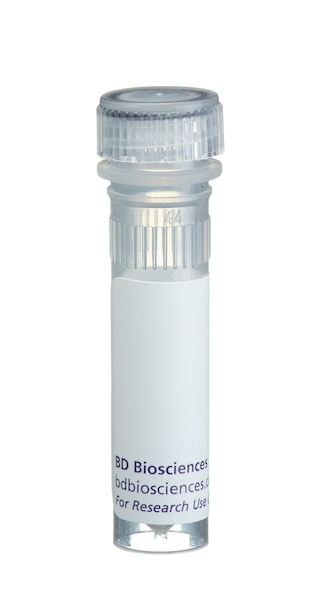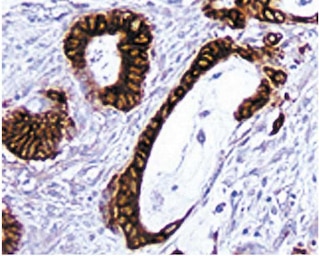-
Training
- Flow Cytometry Basic Training
-
Product-Based Training
- BD FACSDiscover™ S8 Cell Sorter Product Training
- Accuri C6 Plus Product-Based Training
- FACSAria Product Based Training
- FACSCanto Product-Based Training
- FACSLyric Product-Based Training
- FACSMelody Product-Based Training
- FACSymphony Product-Based Training
- HTS Product-Based Training
- LSRFortessa Product-Based Training
- Advanced Training
-
- BD FACSDiscover™ S8 Cell Sorter Product Training
- Accuri C6 Plus Product-Based Training
- FACSAria Product Based Training
- FACSCanto Product-Based Training
- FACSLyric Product-Based Training
- FACSMelody Product-Based Training
- FACSymphony Product-Based Training
- HTS Product-Based Training
- LSRFortessa Product-Based Training
- United States (English)
-
Change country/language
Old Browser
This page has been recently translated and is available in French now.
Looks like you're visiting us from {countryName}.
Would you like to stay on the current country site or be switched to your country?




PBMC were isolated from human peripheral blood by density gradient centrifugation and were cultured with PMA (Sigma, Cat. No. P-8139, 5 ng/ml) and ionomycin (Sigma, Cat. #I-0634, 500 ng/ml) in the presence of GolgiStop™ (Cat. No. 554724) overnight at 37°C. The activated cells were harvested and the presence of IL-6 producing cells was detected by immunocytochemistry using a three -step staining procedure that employs a Biotin Goat anti-Rat IgG secondary antibody (Cat. No. 559286) and a horseradish peroxidase-based detection system. To demonstrate specificity of staining, the binding of Purified Rat Anti-Human IL-6 (Cat. No. 559068) was blocked by the preincubation of the purified antibody with excess recombinant human IL-6 protein (Cat. No. 550071; data not shown). (Nomarski optics, original magnification 400X).


BD Pharmingen™ Purified Rat Anti-Human IL-6

Regulatory Status Legend
Any use of products other than the permitted use without the express written authorization of Becton, Dickinson and Company is strictly prohibited.
Preparation And Storage
Recommended Assay Procedures
Immunocytochemistry: Purified Rat Anti-Human IL-6 (Cat. No. 559068) can be used to identify and enumerate human IL-6 producing cells by immunocytochemistry. For optimal indirect immunocytochemical staining, the MQ2-6A3 antibody should be titrated (≤ 1 µg) and visualized via a three-step staining procedure in combination with Biotin Goat Anti-Rat IgG (Cat. No. 559286) and Streptavidin-HRP (Cat. No. 550946).
* The Avidin/ Biotin method is a highly sensitive method for the detection of cytokines associated with single cells. It employs a mixture of avidin and biotinylated enzyme complexes in order to increase immunoenzymatic signals. For optimal detection of cytokine producing cells, Pharmingen recommends horseradish peroxidase as the preferred enzyme system.
CYTOKINE IMMUNOCYTOCHEMISTRY PROTOCOL
REAGENTS REQUIRED
1. Fixation Buffer: 5% formalin (10% formalin, CMS, Cat. No. 245-684) is dissolved in phosphate buffered-saline (PBS) (Bacto® FA Buffer, Difco Laboratories, Cat. No. 2314-15-0) or BD Pharmingen™ ICC Fixation Buffer (BD Cat. No. 550010)
2. Endogenous Peroxidase Blocking Buffer: DAKO Peroxidase Blocking Reagent (DAKO, Cat. No. S2001).
3. Endogenous Biotin Blocking Buffer: Biotin/Avidin Blocking Kit (Vector Laboratories, Cat. No. SP-2001).
4. Antibody dilution buffer: Pharmingen's Antibody Diluent for IHC (Cat. No. 559148) supplemented with saponin.
5 . Microscopic slides: Adhesion Slides (Erie Scientific Company, Cat. No. ER-202B-AD) or for cytospins, Colorfrost®/Plus slides (Fisher, Cat. No. 12-550-17).
6. Streptavidin - HRP (Cat. No. 550946) or or the Anti-Mouse Ig HRP Detection Kit (Cat. No. 551011).
7. Mounting medium for short-term storage: Aqua-mount® (Lerner Laboratories, Cat. No. 13800).
8. DAB Substrate Kit (Cat. No. 550880) or the Anti-Rat Ig HRP Detection Kit (Cat. No. 551013).\
SECONDARY ANTIBODY
1. Biotin Goat anti-Rat IgG (Cat. No. 559286), or the Anti-Rat Ig HRP Detection Kit (Cat. No. 551013), containing all detection reagents needed.
PROCEDURE FOR IMMUNOCYTOCHEMICAL STAINING OF SINGLE-CELL PREPARATIONS
This procedure describes the immunoenzymatic technique of staining cytokines within individual cells that are immobilized on microscopic slides via adherence (adherent slides) or centrifugation (cytospins).
ADHESION SLIDES
1. Harvest cells and wash them twice in PBS using centrifugation (400 x g for 5 min) to remove residual protein.
2. Adjust the cell concentration at 4 x 10×6 to 5 x 10×6 cells/ml in PBS.
3. Place 20 µl of the cell suspension in each well of the adhesion slides and let them adhere at room temperature (RT) for 20 min. Please note that the slides should be washed in PBS at RT for 5 min before transferring the cells.
4. Fix cells on slides using fixation buffer for 15 min at RT.
5. Wash slides 2X in PBS with 5 min incubations.
6. Block slides with PBS supplemented with 1% (w/v) BSA (Sigma, Cat. No. A43-78) for 30 min at RT or 10 min at 37°C.
7. Wash slides 2X in PBS and proceed with staining or air dry them and store them at -80°C for future use.
8. Incubate slides with 20 µl of 1% goat serum and PBS with 0.1% (w/v) saponin for 30 min at RT.
9. Wash slides 2X with PBS with 5 min incubations.
10. Block endogenous peroxidase activity with Endogenous Peroxidase Blocking Buffer (20 µl/well) for 10 min at RT.
11. Wash 2X in PBS with 5 min incubations.
12. Incubate each well with Avidin (20 µl/well) for 15 min.
13. Wash 2X in PBS with 5 min incubations.
14. Incubate each well with Biotin (20 µl/well) for 15 min.
15. Wash 2X in PBS with 5 min incubations.
16. Incubate each well for 1 hr at RT with 20 µl of purified cytokine-specific antibody or appropriate immunoglobulin isotype control diluted in Pharmingen's IHC Diluent (Cat. No. 559148) supplemented with saponin.
17. Wash slides 2X in PBS with 5 min incubations.
18. Incubate each well with 20 µl of a biotinylated secondary antibody diluted in IHC Diluent for 30 min at RT.
19. Wash 2X in PBS with 5 min incubations.
20. Apply 20 µl of Streptavidin . HRP (Cat. No. 550946) to each well on slides and incubate for 30 min at RT.
21. Wash slides 2X with PBS with 5 minutes incubations.
22. Incubate with 3-3'-Diaminobenzidine tetra hydrochloride (DAB), (Cat. No. 550880) for less than 5 min at RT.
23. Stop the development of the color reaction by washing with PBS.
24. The slides are subsequently mounted in short-term storage mounding medium.
CYTOSPINS
1. Assemble the Cytospin's sample chamber (e.g. Cytospin 3, Shandon, UK or comparable centrifuge), filter card, slide and cytospin racks according to manufacturer's specifications.
2. Load 40 µl of approximately 1 × 10×6 cells to each sample chamber.
3. Spin slides at 600 rpm for 2 min.
4. Take slides out of the cytospin rack and place them on a staining rack.
5. For fixation and staining please follow the steps 4 through 24 specified above for staining cells on adhesion slides.
Product Notices
- Since applications vary, each investigator should titrate the reagent to obtain optimal results.
- Caution: Sodium azide yields highly toxic hydrazoic acid under acidic conditions. Dilute azide compounds in running water before discarding to avoid accumulation of potentially explosive deposits in plumbing.
- Sodium azide is a reversible inhibitor of oxidative metabolism; therefore, antibody preparations containing this preservative agent must not be used in cell cultures nor injected into animals. Sodium azide may be removed by washing stained cells or plate-bound antibody or dialyzing soluble antibody in sodium azide-free buffer. Since endotoxin may also affect the results of functional studies, we recommend the NA/LE (No Azide/Low Endotoxin) antibody format, if available, for in vitro and in vivo use.
- Please refer to http://regdocs.bd.com to access safety data sheets (SDS).
- Please refer to www.bdbiosciences.com/us/s/resources for technical protocols.
Companion Products






The MQ2-6A3 antibody reacts with human interleukin-6 (IL-6). The immunogen used to generate the MQ2-6A3 hybridoma was recombinant human IL-6. This is a neutralizing antibody.
Development References (5)
-
Abrams J. Immunoenzymetric assay of mouse and human cytokines using NIP-labeled anti-cytokine antibodies. Curr Protoc Immunol. 2001; 1:6.20-6.21. (Clone-specific). View Reference
-
Abrams JS, Roncarolo MG, Yssel H, Andersson U, Gleich GJ, Silver JE. Strategies of anti-cytokine monoclonal antibody development: immunoassay of IL-10 and IL-5 in clinical samples. Immunol Rev. 1992; 127:5-24. (Clone-specific). View Reference
-
Gaines Das RE, Poole S. The international standard for interleukin-6. Evaluation in an international collaborative study. J Immunol Methods. 1993; 160(2):147-153. (Clone-specific). View Reference
-
Hsu SM, Raine L, Fanger H. A comparative study of the peroxidase-antiperoxidase method and an avidin-biotin complex method for studying polypeptide hormones with radioimmunoassay antibodies. Am J Clin Pathol. 1981; 75(5):734-738. (Methodology). View Reference
-
Hsu SM, Raine L, Fanger H. Use of avidin-biotin-peroxidase complex (ABC) in immunoperoxidase techniques: a comparison between ABC and unlabeled antibody (PAP) procedures. J Histochem Cytochem. 1981; 29(4):577-580. (Methodology). View Reference
Please refer to Support Documents for Quality Certificates
Global - Refer to manufacturer's instructions for use and related User Manuals and Technical data sheets before using this products as described
Comparisons, where applicable, are made against older BD Technology, manual methods or are general performance claims. Comparisons are not made against non-BD technologies, unless otherwise noted.
For Research Use Only. Not for use in diagnostic or therapeutic procedures.
Report a Site Issue
This form is intended to help us improve our website experience. For other support, please visit our Contact Us page.